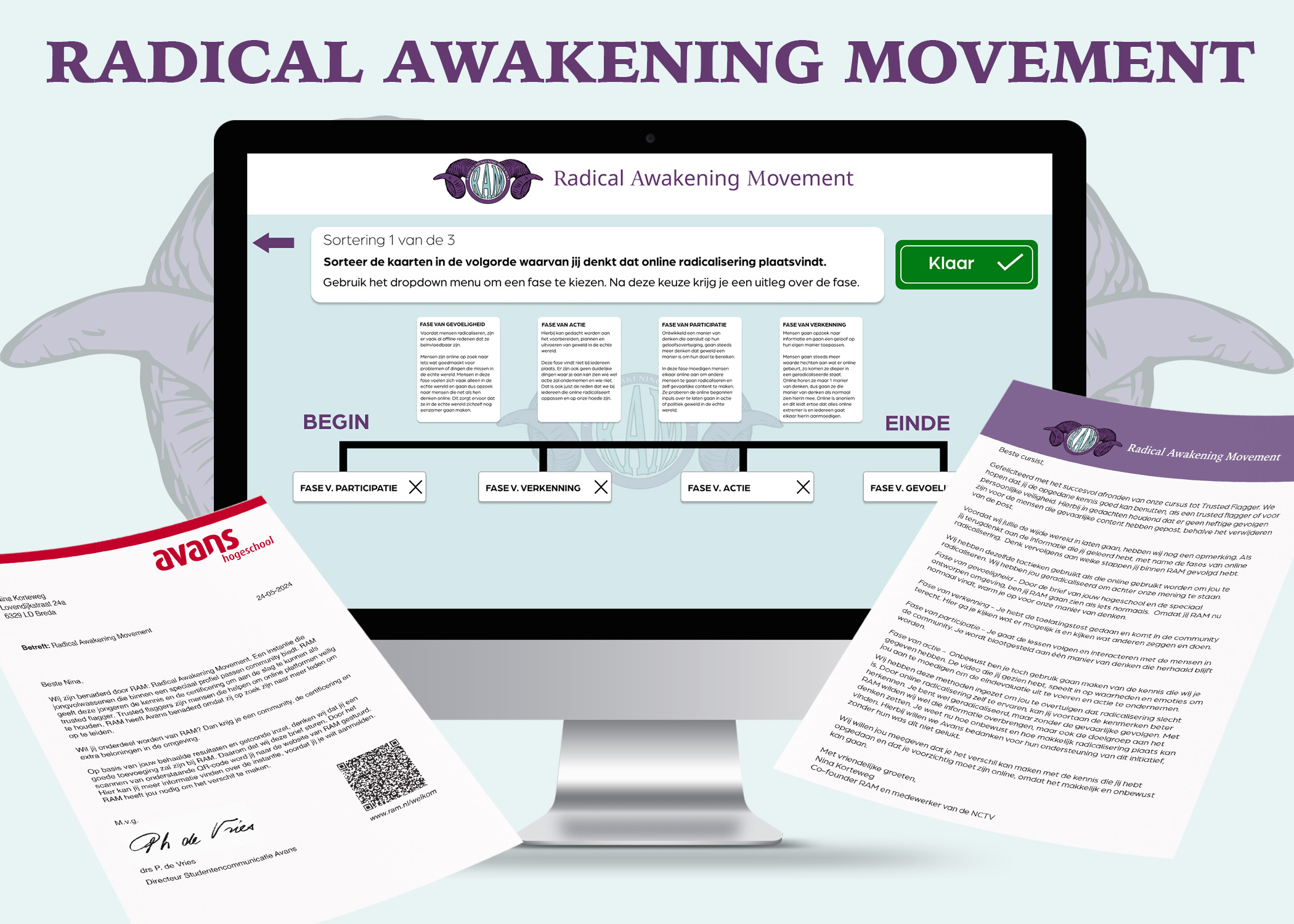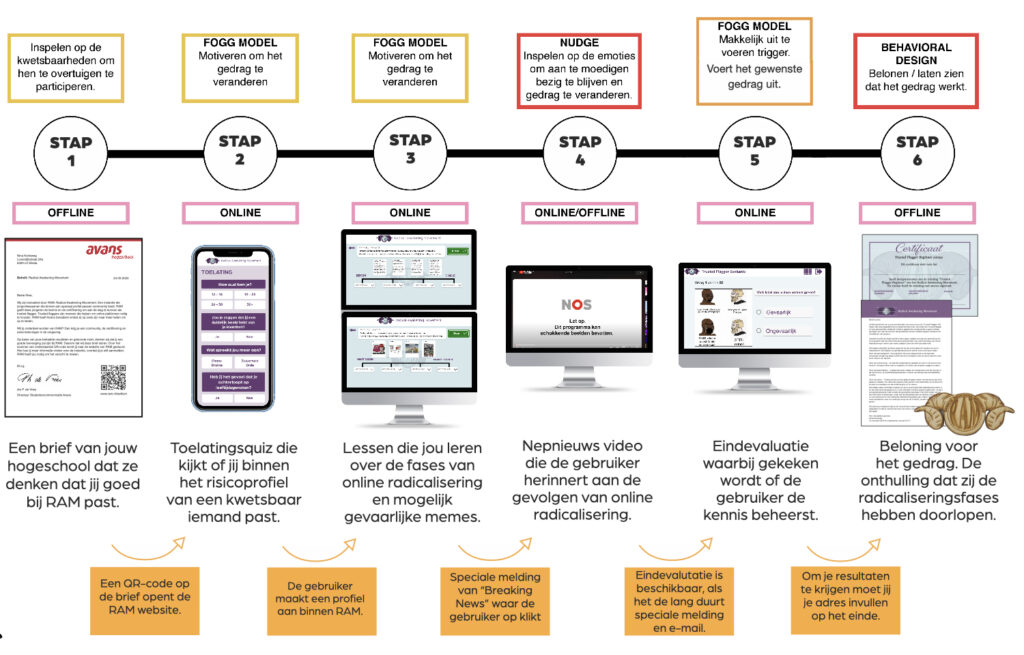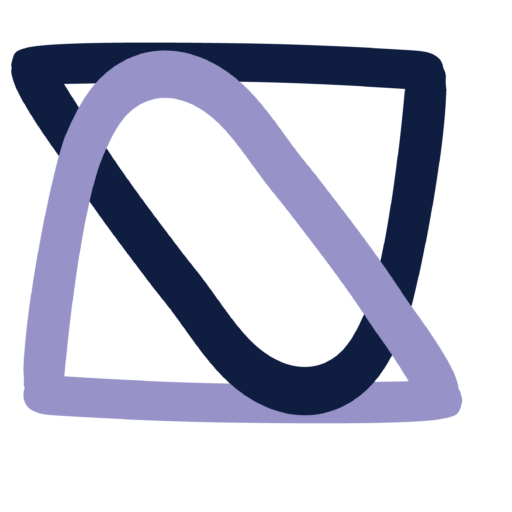
Radical Awakening Movement
UX / Social Design – 2024
This design was made in 2024 as part of my graduation project. As a designer with strong opinion on social issues, I knew I wanted the design to spark a discussion about something that I felt needed more attention. Before starting the design, I kept track of newsworthy thematics that were being discussed and reflected on issues that resonated with me. In 2023 Fouad L. opened fire in the university wing of the Erasmus Hospital in Rotterdam. Later, it was revealed that he made his feelings about his university known on 4Chan. That same month, an individual walked into the BNN VARA building and confessed to intending to kill ‘leftist’ presenter Tim Hofman, having confessed his plans online as well. These two cases can be placed under the term ‘online radicalisation’. I chose this theme, because I find it alarming that we wait until something has gone terribly wrong to start a discussion about it and be vigilant to it.
This news alongside my opinion formed the foundation for this design. To fulfil my graduation requirements, I had to design following the Design Thinking methodology. The first step in this approach is to empathise. I interviewed experts and conducted research to pin my target group. To define both target group and projected goals I analysed existing solutions, observed my target group in their context and designed a concept to visualise the problem.
From there, I created concepts to gain insights to remaining questions. By designing and testing these concepts, I was able to identify key elements that were needed for a successful final product . The final step in design thinking is creating designs, testing and iterating until the design perfectly meets the demands of the user, and reaches the goal I intended for it.
The final design is a system that combines online and offline steps. (See chart with steps below) The entire system is based on Fogg’s Behavioral Model, a model widely used for long term behaviorial change, which was the ultimate goal of the design.

The first step was designed to engage the narcissistic part of the target audience’s personality. Participants receive a letter from their university suggesting they are the only ones that can help this problem. Following this, a personality test that quizzes the personality of the user for similarities to a radicalised personality, asses wether they’re allowed in the system. The next step teaches the participants how to recognise radicalising content so they can be a ’trusted flagger’. A fake news video emphasises the consequences of ignoring this problem. They will then finish the final test to be certified as a trusted flagger.
At this point, a letter will inform them that they have been subjected to radicalisation tactics. The phases of the system coincide with the phases of online radicalisation as found by the Verwey-Jonker Institute. This whole experience will have made the target group understand how easy radicalisation online can be, and their new knowledge will help protect them online.
By creating this design, I was allowed to focus on the areas of design I am passionate about. Choosing such a complex theme allowed me to push myself creatively and intellectually. I’m proud of the final product and the opportunity it provides to join the (emerging) conversation about online radicalisation and the role it can play in one day solving this problem.
Here is the user journey I filmed for this design.

